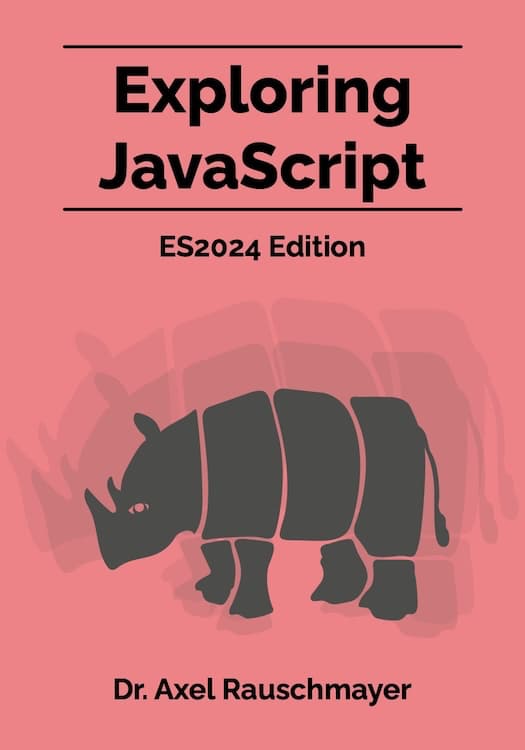ECMAScript.next: array comprehensions and generator comprehensions
[2013-01-09] esnext, dev, javascript
(Ad, please don’t block)
Update 2014-08-04: Comprehensions won’t be in ECMAScript 6. There’s a chance that an updated version of them will be in ECMAScript 7 or later.
ECMAScript.next will have two kinds of comprehensions: array comprehensions and generator comprehensions. They allow one to quickly assemble an array or a sequence of elements. Comprehensions exist in many programming languages, for example: CoffeeScript, Python, Haskell, Clojure.
Array comprehensions
Array comprehensions look like this:[for (x of a) for (y of b) if (x > y) [x,y]]This is equivalent to calling the following function (which uses ECMAScript.next’s for-of loop [1]).
function arrayComprehension() {
let result = [];
for (let x of a) {
for (let y of b) {
if (x > y) {
result.push([x,y]);
}
}
}
return result;
}
There can be two kinds of clauses inside an array comprehension, in any order (but the first clause must be a for):
- for
- if
let numbers = [1,2,3];
let squares = [for (x of numbers) x*x];
However, Array.prototype.map becomes more convenient in ECMAScript.next, too, because there will be arrow functions [2]:
let squares = numbers.map(x => x * x);
Generator comprehensions
Generator comprehensions work and look almost like array comprehensions. But they are delimited by parentheses and produce a generator object [1]. That object yields the elements instead of putting them in an array (which means that you can work with potentially infinite sequences). For example:(for (x of a) for (y of b) if (x > y) [x,y])This is equivalent to calling the following generator function.
function* generatorComprehension() {
for (x of a) {
for (y of b) {
if (x > y) {
yield [x,y];
}
}
}
}
You can iterate over the yielded elements like this:
let compr = ( ... );
for (elem of compr) {
console.log(elem);
}
Syntax: left-to-right versus right-to-left
ECMAScript.next will use left-to-right syntax: the expression producing the elements comes last, after the clauses. Quoting David Herman:Note that while Haskell and Python use the right-to-left syntax, F# and C# both have left-to-right syntax.The advantage of left-to-right syntax is that it mirrors how one would write imperative loops and if statements (in the manner shown above).
Trying out comprehensions in Firefox
You can try out comprehensions in Firefox, but their syntax not the same as in ECMAScript.next (yet):- Array comprehensions
- Generator expressions (Firefox’s name for generator comprehensions)





